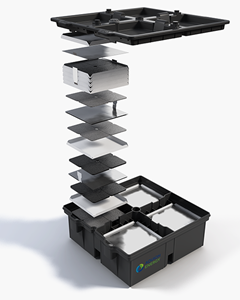 |
| Inside an Aquion AHI Battery |
"We have been hard at work making the world's best long duration battery even better. The improved chemistry of the second generation Aqueous Hybrid Ion battery yields more energy, and will deliver more value for our customers," said Scott A. Pearson, CEO of Aquion Energy. "We are unveiling the new technology at Solar Power International because Aquion's unmatched long duration batteries enable optimal self-consumption of distributed solar generation and ease the burden of intermittent renewable energy on the grid. These two applications are the key to unlocking broad adoption of clean solar electricity as a mainstream energy source." - See more at:
Aquion Energy Unveils Next Generation of AHI Battery Technology Delivering a 40 Percent Increase in Energy